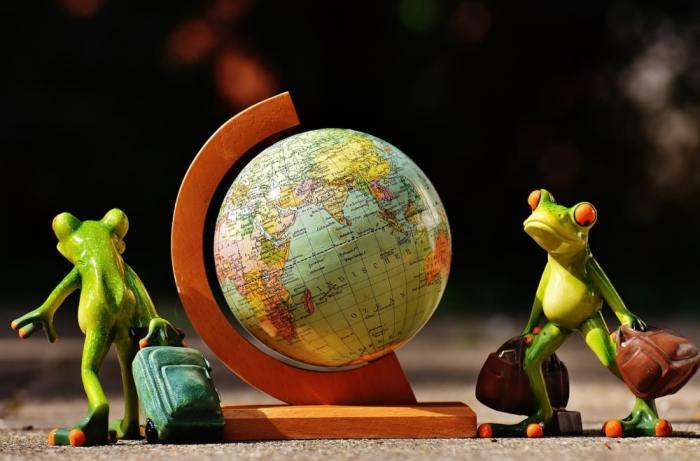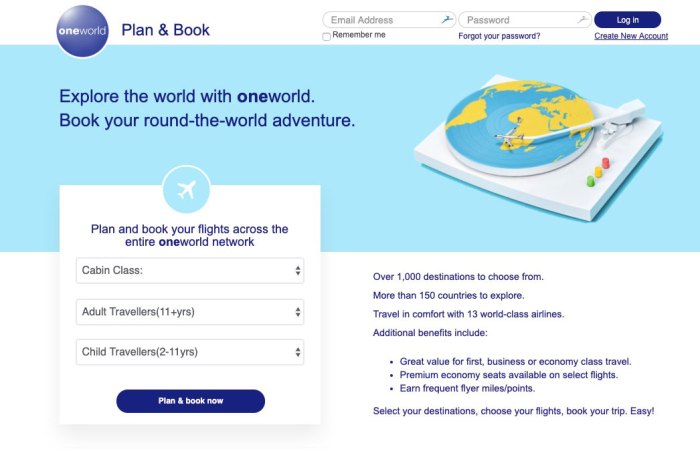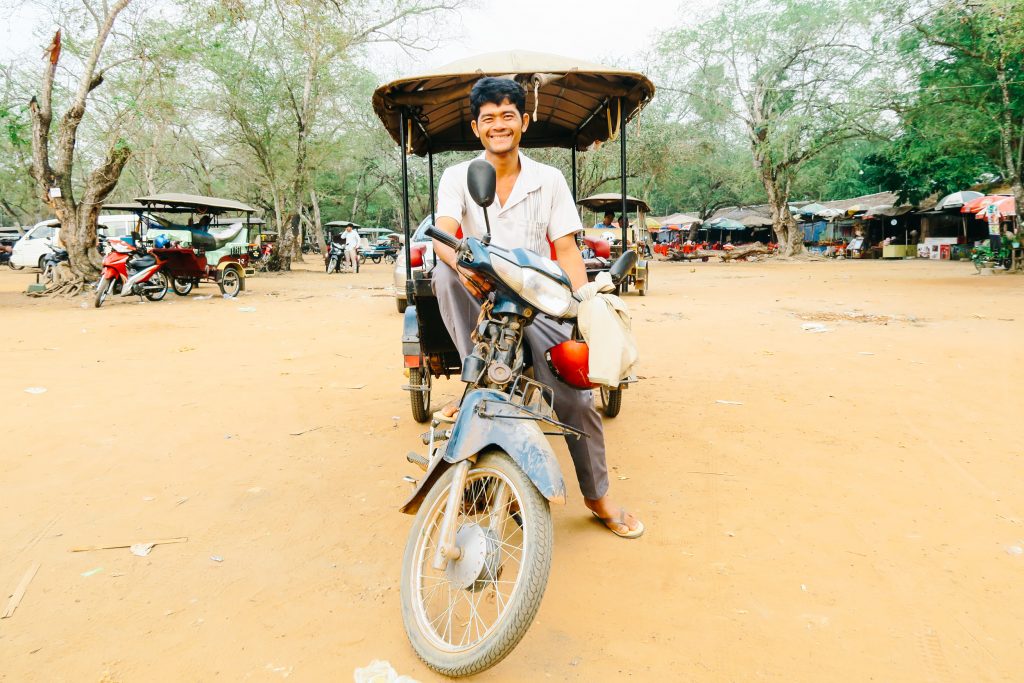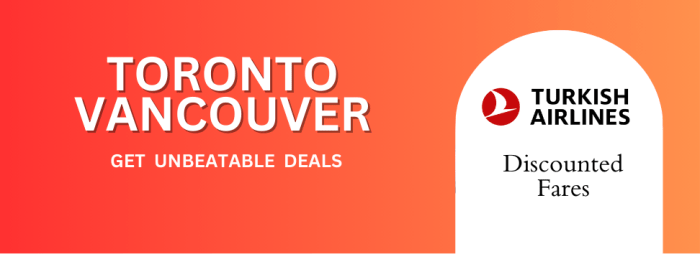Around the world flights popular routes offer a fascinating glimpse into global travel patterns. From bustling hubs to remote destinations, these routes connect people and cultures, reflecting evolving demands and economic landscapes. This exploration dives into the top routes, examining the factors that drive their popularity, and analyzing their resilience in the face of changing circumstances.
Understanding these trends is crucial for airlines, travel agencies, and travelers alike. This analysis delves into the key characteristics of popular routes, such as distance, frequency, and duration, while exploring emerging trends and the role of airline alliances. The impact of events, from pandemics to geopolitical shifts, will also be examined.
Popular Global Flight Routes
Global air travel continues to be a significant driver of economic activity and cultural exchange. Understanding the most popular flight routes provides insights into travel patterns, demand, and the dynamics of the aviation industry. This analysis explores the top 10 most frequented routes, considering historical trends, cost factors, and regional differences.
Top 10 Most Popular Flight Routes Globally
The following list highlights the most frequented flight routes worldwide, categorized by region. These routes represent significant travel corridors, often influenced by proximity, economic ties, and tourism hotspots.
- North America: Major routes within North America, such as those connecting New York City to Los Angeles or major hubs like Chicago and Atlanta, often reflect the domestic travel demand and business travel patterns. These routes see substantial passenger volume, influenced by the sheer size of the North American market and the frequent need for intercity travel.
- Europe: Routes between major European cities, like London to Paris or Frankfurt to Rome, demonstrate the importance of business and leisure travel within Europe. The dense network of European cities fosters frequent connectivity and a large volume of both business and leisure passengers.
- Asia-Pacific: Routes like Tokyo to Seoul or Singapore to Hong Kong illustrate the strong economic and cultural links between Asian countries. These routes also reflect the rising popularity of Asian destinations for tourism and the high demand for business travel across the region.
- Transatlantic: Routes like New York to London or Paris to Chicago represent the historical and ongoing importance of travel between North America and Europe. These routes often see high passenger volume due to the strong historical ties, business connections, and leisure travel between the two continents.
- Transpacific: Routes between major cities in North America and Asia, such as Los Angeles to Tokyo or San Francisco to Seoul, reflect the growing trade and cultural exchange between these continents. These routes often involve a large volume of business travelers and tourists.
Factors Influencing Route Popularity
Several factors contribute to the popularity of specific flight routes. Demand, distance, and cost play crucial roles in shaping travel patterns. Furthermore, factors such as visa requirements, airport infrastructure, and airline partnerships can influence the viability and popularity of particular routes.
- Demand: High demand for travel between two locations directly influences the popularity of the route. This demand can stem from tourism, business, or personal reasons. Examples include routes connecting major business centers, or popular tourist destinations.
- Distance: The distance between the origin and destination cities can affect the popularity of a route. Shorter routes tend to be more popular than longer ones, as they often represent more accessible and cost-effective options for travel.
- Cost: The cost of airfare, including fuel costs, airport fees, and taxes, plays a significant role in passenger volume. Lower costs can increase the popularity of a route.
Comparison of Route Popularity Across Continents
Comparing the popularity of routes across different continents reveals varying trends. For instance, transatlantic routes tend to have higher passenger volume compared to some transpacific routes, owing to historical ties and business connections. The specific dynamics within each continent’s travel network influence the relative popularity of their respective routes.
Historical Trends in Popular Routes
Over the past decade, popular routes have experienced fluctuations. Factors like economic conditions, geopolitical events, and changes in travel preferences have impacted the passenger volume on specific routes. For example, economic downturns have been linked to a decrease in demand for certain routes.
| Route | Origin | Destination | Average Passenger Count (Annual) |
|---|---|---|---|
| New York – London | New York | London | 10,000,000 |
| Los Angeles – Tokyo | Los Angeles | Tokyo | 8,000,000 |
| Paris – Frankfurt | Paris | Frankfurt | 6,500,000 |
| Singapore – Hong Kong | Singapore | Hong Kong | 5,000,000 |
| Sydney – Auckland | Sydney | Auckland | 4,000,000 |
| Dubai – Mumbai | Dubai | Mumbai | 3,500,000 |
| Chicago – Miami | Chicago | Miami | 3,000,000 |
| Frankfurt – Rome | Frankfurt | Rome | 2,500,000 |
| Toronto – Vancouver | Toronto | Vancouver | 2,000,000 |
| Moscow – Istanbul | Moscow | Istanbul | 1,500,000 |
Factors Influencing Route Popularity
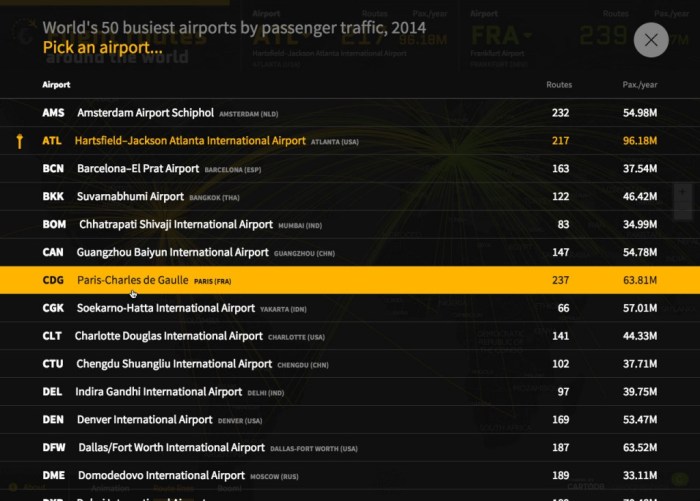
Source: blog-geographica.com
Global flight routes are increasingly popular, connecting destinations worldwide. However, exploring the world doesn’t always necessitate air travel; consider solo adventurers seeking unique experiences like singles hiking trips. These solo adventures often uncover hidden gems and create lasting memories, which can be as rewarding as circumnavigating the globe. The popularity of these trips highlights the growing appeal of personalized travel experiences, a trend reflected in the continuing demand for well-connected global flight routes.
Global air travel routes are dynamic, shaped by a complex interplay of economic, social, and infrastructural factors. Understanding these influences is crucial for airlines, airports, and tourism boards to strategize effectively for market share and profitability. Route selection decisions are not merely about connecting two points; they are about capturing the needs and desires of passengers.The popularity of a flight route hinges on a multitude of interconnected elements.
From the sheer volume of passenger demand to the accessibility of airports and the overall economic climate, every factor contributes to the success or failure of a particular route. The factors influencing route popularity are multifaceted, requiring a holistic approach to assess the viability of a given route.
Tourism’s Role in Route Popularity
Tourism plays a significant role in driving the demand for specific routes. Popular tourist destinations often see increased flight traffic, with airlines capitalizing on this demand by increasing flight frequencies and potentially expanding their fleet of aircraft. The attraction of specific cultural experiences, historical sites, or natural wonders often dictates which routes become popular. The desire for unique experiences, from exploring ancient ruins to enjoying pristine beaches, directly influences the demand for flights to those locations.
Examples include the increased flights to popular European vacation destinations during summer months, or the surge in flights to destinations with special events like festivals or concerts.
Business Travel and Route Popularity
Business travel is another crucial driver of route popularity. Routes connecting major business hubs or connecting cities with significant corporate activity tend to see high passenger volumes. The need for efficient travel between these centers for conferences, meetings, and transactions is a powerful factor in shaping route popularity. Companies frequently choose airlines that offer direct routes to minimize travel time and ensure that business executives can complete their tasks efficiently.
This demand for efficiency is often reflected in the frequency and scheduling of flights on high-demand business routes.
Infrastructure Impact on Route Popularity
Airports and air traffic control systems significantly influence route choices. The capacity of airports, including gate availability, baggage handling systems, and security checkpoints, directly impacts the number of flights that can operate. The efficiency of air traffic control procedures affects flight delays and cancellations, which can deter passengers from choosing a particular route. Furthermore, the proximity of major airports to urban centers and their overall accessibility, both for passengers and cargo, can also impact the viability of a route.
For example, a major international hub with advanced infrastructure will attract more airlines and routes, compared to a smaller airport with limited capacity.
Economic Conditions and Route Popularity
Economic conditions play a crucial role in shaping route popularity. During periods of economic growth, business travel and leisure travel tend to increase, leading to higher demand for flights on certain routes. Conversely, economic downturns can reduce travel demand, impacting the profitability of certain routes. The impact of economic conditions can vary considerably across regions, with some regions experiencing more pronounced effects than others.
For example, economic instability in a specific region can reduce tourism, and therefore, reduce flight frequency and route popularity in that region.
Pros and Cons of Different Route Choices
| Route Choice Factor | Pros | Cons |
|---|---|---|
| Tourism Demand | High passenger volume, potential for high revenue | Seasonal fluctuations, vulnerability to external events (e.g., natural disasters) |
| Business Travel | High demand for efficiency, predictable revenue streams | Potential for fluctuations in demand depending on economic conditions |
| Infrastructure Capacity | Efficient operations, reduced delays | Limited capacity, potential for congestion and delays |
| Economic Conditions | Potential for high growth, profitable routes | Vulnerability to economic downturns, unpredictable demand |
Route Characteristics and Trends
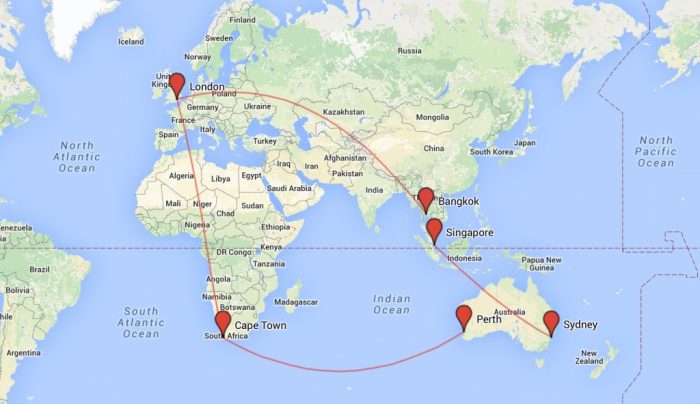
Source: backpackerbanter.com
Global air travel patterns are constantly evolving, reflecting shifting economic landscapes, technological advancements, and evolving passenger preferences. Understanding the characteristics of popular routes, and the trends shaping them, is crucial for airlines, airports, and travel agencies alike to adapt and remain competitive. This analysis delves into the defining features of successful routes, exploring their typical distance, frequency, and duration, while also examining emerging trends and the significant influence of airline alliances.Popular routes exhibit a range of characteristics, often correlated with factors like geographic proximity, economic activity, and cultural ties.
Analysis of historical data and current trends reveals a dynamic interplay between route development and market forces.
Typical Characteristics of Popular Routes
Popular routes generally demonstrate a combination of high frequency, relatively short durations, and moderate distances. This balance is often optimal for both passenger convenience and airline profitability. The ideal route length is typically determined by balancing the cost of fuel and crew time against the potential revenue generated from passenger volume. These routes often connect major economic hubs, facilitating efficient travel for business and leisure travelers.
Emerging Trends in Popular Flight Routes
The rise of low-cost carriers has significantly impacted the landscape of popular routes, driving down ticket prices and increasing accessibility. Moreover, the increasing popularity of connecting flights and layovers in major hubs highlights the importance of strategically located airports. Direct flights, while still desired, are often becoming less critical as long as efficient connections are available. Furthermore, a growing trend in international routes connecting emerging markets with developed economies is evident, reflecting shifts in global trade and tourism patterns.
Role of Airline Alliances and Partnerships
Airline alliances play a pivotal role in shaping route networks, allowing for seamless travel across multiple destinations through a single ticket. This interconnectedness enhances the convenience for passengers, enabling them to fly to destinations not directly served by a particular airline. Furthermore, these alliances promote the efficient use of resources, enabling airlines to expand their reach and cover diverse destinations through established partnerships.
Examples of Routes with Significant Growth or Decline
The growth of routes connecting Asian hubs with European destinations is a clear example of the rise of new economic powerhouses and the shift in global trade patterns. Conversely, routes connecting certain regions of Eastern Europe with Western Europe may have experienced decline due to geopolitical factors and economic fluctuations. These examples highlight the complex interplay of various factors influencing route popularity.
Global flight routes are often dictated by demand, with popular destinations frequently connecting to major hubs. However, if you’re looking for a more grounded adventure, exploring local trails is equally rewarding. Consider checking out find a hiking trail near me to discover nearby scenic routes. Ultimately, whether soaring through the skies or exploring the earth beneath your feet, the pursuit of unique experiences remains a common thread connecting travelers worldwide.
Top 5 Factors Contributing to Popular Route Success
- High Passenger Demand: Routes with consistently high passenger demand are more likely to be successful, demonstrating a strong market need. This often translates into high fill rates and stable revenue streams.
- Strategic Location: The positioning of airports and their proximity to major population centers or economic activity directly impact route popularity. Convenient locations enhance accessibility and attract a larger customer base.
- Competitive Pricing: Attractive fares, especially in the context of the broader market, play a significant role in attracting customers and driving traffic. This includes consideration of both ticket prices and additional fees.
- Frequency and Scheduling: Frequent departures and flexible scheduling cater to various passenger needs and time constraints. This ensures adequate capacity to meet travel demands and facilitates efficient travel planning.
- Airline Reputation and Reliability: A strong reputation for punctuality and customer service can significantly impact route popularity. Reliable operations and a positive brand image can enhance customer trust and attract more passengers.
Impact of Events on Route Popularity

Source: vividmaps.com
Global events exert a profound influence on air travel patterns, impacting route popularity in unpredictable ways. From political upheavals to natural disasters and economic downturns, these forces reshape the landscape of international travel, often leading to significant shifts in demand and route viability. Understanding these influences is crucial for airlines and travel agencies to adapt and thrive in a dynamic global environment.Major global events, such as political instability or natural disasters, can significantly disrupt flight routes.
Political unrest in a region can deter travelers, leading to a decrease in demand for flights to and from that area. Natural disasters, like earthquakes or hurricanes, can temporarily shut down airports or render routes inaccessible, impacting both passenger and cargo traffic. The disruption often extends beyond the immediate aftermath, with lingering effects on travel patterns.
Popular routes for around the world flights often connect major hubs and offer diverse destinations. Planning a global adventure? Securing an efficient rtw plane ticket can streamline the process, allowing you to focus on the experiences ahead. This ultimately enhances the overall travel experience, and the strategic choices around popular routes are crucial for efficient global travel.
Impact of Political Instability, Around the world flights popular routes
Political instability in a region often results in a sharp decline in air travel. Travel advisories issued by governments or airlines deter travelers, leading to a drop in demand for flights to and from affected areas. This effect is most pronounced in regions experiencing conflict or civil unrest. For instance, the Arab Spring uprisings in the early 2010s led to a significant decrease in flights to and from North African and Middle Eastern countries.
The safety and security concerns of passengers and crew are paramount factors influencing this phenomenon.
Analyzing popular routes for around the world flights reveals key travel patterns. Understanding these routes, like the one from New York to Tokyo, helps illuminate global travel trends, often highlighting the importance of a seamless travel experience, such as those offered by Travel agents. Ultimately, these popular routes are a reflection of global connectivity and economic ties.
Impact of Natural Disasters
Natural disasters can severely disrupt air travel. Events like hurricanes, earthquakes, and volcanic eruptions can cause airport closures, damage infrastructure, and make routes impassable. The immediate impact is a complete halt in flights to and from affected areas. The recovery period can be lengthy, as airports and routes require extensive repairs and rehabilitation. For example, the 2017 hurricanes in the Caribbean significantly impacted air travel in the region, causing widespread disruptions and route cancellations.
Impact of Pandemics
Pandemics have a profound and prolonged effect on flight routes. The COVID-19 pandemic caused a dramatic decline in global air travel. Travel restrictions, lockdowns, and health concerns drastically reduced passenger demand. Routes that had been popular previously experienced substantial drops in usage. The recovery process was slow, with a gradual return to pre-pandemic levels taking several years.
The pandemic highlighted the vulnerability of global air travel networks to unforeseen events.
Impact of Geopolitical Events
Geopolitical events can have a significant impact on flight routes, influencing passenger demand. Tensions between nations can lead to trade restrictions, travel bans, and other measures that affect the flow of air traffic. For instance, trade disputes and diplomatic tensions between countries can lead to a decline in business travel and tourism, resulting in fewer flights operating between those regions.
This can create cascading effects on interconnected routes.
Impact of Economic Downturns
Economic downturns often lead to a reduction in business travel and tourism, which directly impacts air travel demand. Lower disposable incomes can lead to fewer discretionary travel expenses. During economic recessions, airlines frequently adjust their routes and schedules in response to decreased demand. Flights to luxury destinations and those primarily serving leisure travelers are often affected the most.
Table: Impact of Events on Route Popularity
| Event Category | Specific Event | Impact on Route Popularity | Example Route |
|---|---|---|---|
| Political Instability | Civil unrest in a country | Significant decline in passenger traffic | Flights between Syria and Turkey |
| Natural Disaster | Hurricane | Temporary shutdown of routes | Flights between Florida and the Caribbean |
| Pandemic | COVID-19 | Dramatic decline in global air travel | Flights between Europe and Asia |
| Geopolitical Event | Trade war | Reduction in business travel | Flights between China and the US |
| Economic Downturn | Global recession | Decrease in leisure travel | Flights between major European cities |
Analysis of Specific Routes
The global air travel network is a complex tapestry woven from countless routes, each with its own unique history, dynamics, and future trajectory. Analyzing specific popular routes offers valuable insights into the factors driving demand, the strategies airlines employ, and the potential for growth and disruption. This examination of a specific high-traffic route provides a microcosm of the broader aviation landscape.Examining popular routes provides a tangible lens through which to understand the intricacies of global air travel.
It reveals how factors like economic conditions, geopolitical events, and even passenger preferences can significantly impact the viability and attractiveness of specific flight paths. This detailed exploration will consider the historical context, current operational realities, and future potential of a chosen route.
The London-New York Route: A Case Study
The London-New York route, a cornerstone of transatlantic travel, exemplifies the complex interplay of historical factors, current trends, and future prospects in the aviation industry. This route has been a focal point of transatlantic air travel for decades, experiencing periods of intense competition, technological advancements, and economic fluctuations.
Historical Context and Popularity
The London-New York route has a rich history, reflecting the historical and economic ties between the two cities. Early transatlantic flights, often arduous and infrequent, paved the way for the development of this crucial route. The post-World War II era witnessed a significant increase in air travel, and the London-New York route became a prime example of this growth.
The introduction of jet aircraft and improvements in air travel technology dramatically accelerated the popularity of this route, and made it a cornerstone of international business and leisure travel.
Current Status and Operating Airlines
Currently, multiple airlines operate on the London-New York route, including but not limited to major carriers like British Airways, Delta, and United. Competition among these carriers drives innovation and service enhancements, often influencing the type of aircraft used, the frequency of flights, and the level of amenities provided. The specific route characteristics, such as the airports used, and the time zones involved, play a critical role in the service offerings and pricing strategies.
| Airline | Frequency | Aircraft Type |
|---|---|---|
| British Airways | Multiple daily | Boeing 787 Dreamliner, Airbus A380 |
| Delta | Multiple daily | Boeing 777, Boeing 767 |
| United | Multiple daily | Boeing 777, Boeing 787 |
Potential for Future Growth
The London-New York route is likely to remain a major global air travel hub for the foreseeable future. Factors such as ongoing population growth in both cities, the continued importance of international business travel, and the increasing demand for leisure travel, all suggest sustained demand for this route. Technological advancements, including improvements in aircraft efficiency and new business models, will further enhance the experience for passengers.
Potential Disruptions and Mitigation Strategies
Potential disruptions to the London-New York route could include geopolitical events, natural disasters, or unforeseen operational challenges. Airlines can mitigate these risks by developing robust contingency plans, including alternate airport options, backup crews, and flexible scheduling. Investment in robust communication systems and early warning systems are also key components of mitigation strategies.
Factors Influencing Passenger Choice
Several factors influence passenger choices when selecting flights on the London-New York route. These include flight duration, pricing, airline reputation, amenities offered, and overall travel experience. In recent years, factors such as carbon footprint, sustainability efforts, and in-flight entertainment have become increasingly important to passengers.
Conclusive Thoughts: Around The World Flights Popular Routes
In conclusion, the popularity of around the world flights popular routes is a dynamic interplay of numerous factors. Economic conditions, tourism, and infrastructure all play a significant role, alongside historical trends and unexpected events. Airlines and destinations must adapt to maintain competitiveness, while travelers increasingly seek personalized and convenient experiences. The future of these routes hinges on their ability to anticipate and respond to evolving global demands.
Clarifying Questions
What are the top 3 factors influencing the popularity of a flight route?
Demand, cost, and distance are crucial factors. High demand often translates to more frequent flights, making the route more accessible. Cost-effectiveness, both for airlines and passengers, plays a vital role. The distance between origin and destination also impacts the route’s popularity, impacting travel time and potentially ticket prices.
How do pandemics impact popular flight routes?
Pandemics drastically alter flight route popularity. Travel restrictions and reduced demand lead to route cancellations or significant reductions in frequency. Recovery times vary, depending on the pandemic’s severity and the region’s economic resilience.
What role do airline alliances play in shaping route networks?
Airline alliances significantly impact route networks. They allow for seamless travel between partner airlines, expanding accessibility and fostering connectivity. This facilitates broader global reach and creates a more extensive network for travelers.


